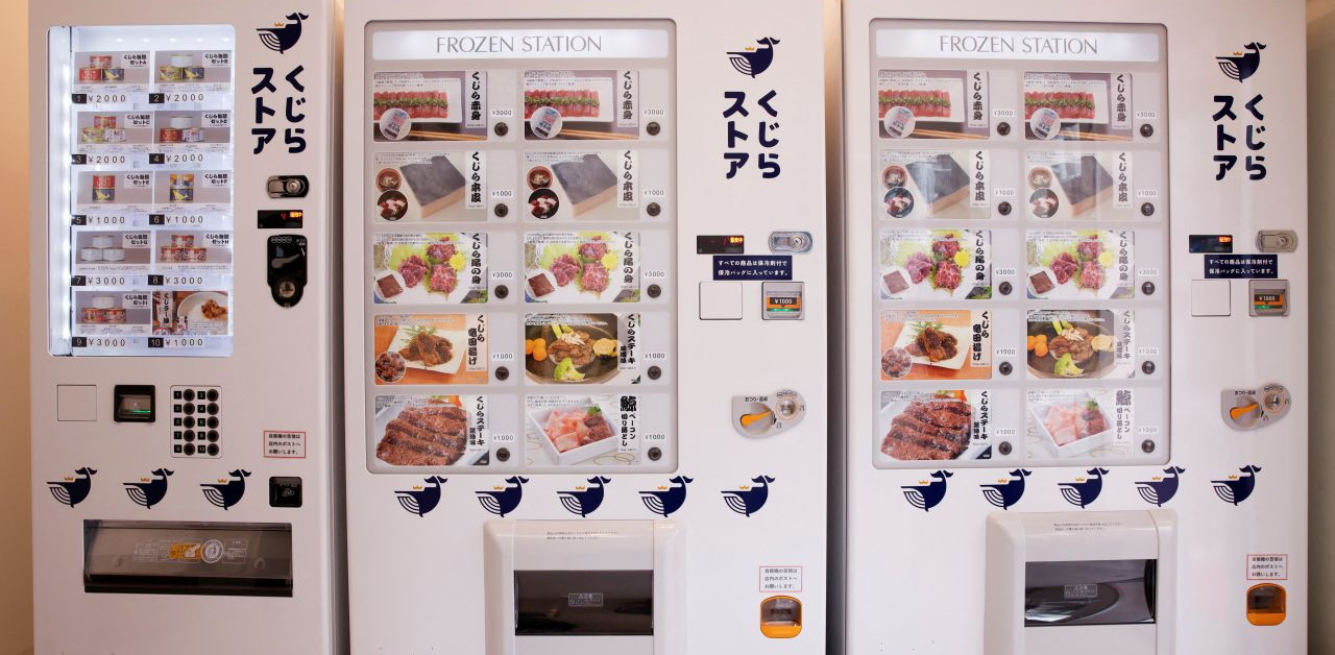The Japanese company Kyodo Senpaku has promoted food vending machines based on whale meat, in the hope of recovering a business that is fading also due to the collapse of overall consumption.
For centuries, whaling has been one of Japan’s most controversial historical traditions . In fact, the consumption of whale meat are part of the local culinary tradition for centuries if not millennia: the first traces of consumption of whale meat date back to the Jomon era (ranging from 4000 to 300 BC) while the first traces of harpoons for hunting date back to the twelfth century. Even the legendary Godzilla is inspired by the whale, as you can guess from its name Gojira, which recalls the word Kujira, or whale, giving further proof of the cultural importance that this mighty marine mammal has on the Japanese population.
Today, the hunting of cetaceans is subject to an international moratorium for the protection of these species that, however, is not respected nor recognized by some countries, including Japan, which has long continued to hunt whales advancing reasons for “scientific research”. And while Iceland declares that it will no longer hunt whales from 2024, recognizing that today this activity no longer makes, and is no longer worth the effort or disapproval of the world, in Yokohama and in the rest of Japan there are automatic machines, that for a few euros, sell sashimi, steak and bacon all strictly whale, in the hope of raising the sales of a long-declining food and avoided by many supermarkets.
The international ban on whaling – established since 1986 by the International Whaling Commission (IWC) – has helped some species of cetaceans to survive and repopulate selected areas. Even after the ban, there are still many specimens that die, hit by ships, entangled in fishermen’s nets or disoriented by the sonar system used by military vessels often, while moving to new habitats, due to water overheating caused by the climate crisis.
This loss has a negative effect on species and ecosystems and can also have an impact on the climate: whales and other large animals carry a significant amount of carbon to the seabed when they die.
This is stated by a study, published in the magazine “Trends in Ecology and Evolution”. Through their diet of krill and photosynthetic plankton, these cetaceans are able to store carbon dioxide, thus reducing the amount present in the ocean and atmosphere due to human activities. The mechanism is simple, explain the researchers: these cetaceans consume every day up to 4% of their massive body weight in krill and plankton. For the blue whale, this is equivalent to almost 18 thousand kilograms – says the study – When they finish digesting food, excrement expelled are rich in important nutrients that help these krill and plankton to thrive, promoting increased photosynthesis and accumulation of carbon from the atmosphere.
Even according to scientists, their role could be as important as that of forests: every year a tree absorbs just under 106 kg of CO2, says a report of the 2019 International Monetary Fund, while a whale can capture up to 33 tons of CO2, thanks to its weight, which can reach 28 tons, and longevity – many live over 100 years!






